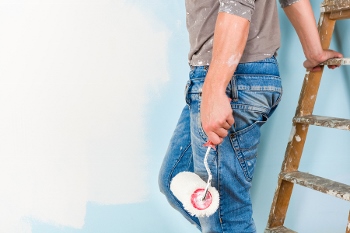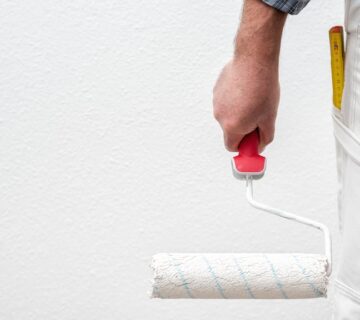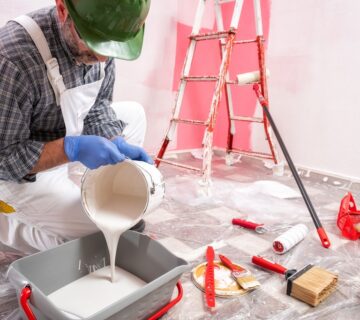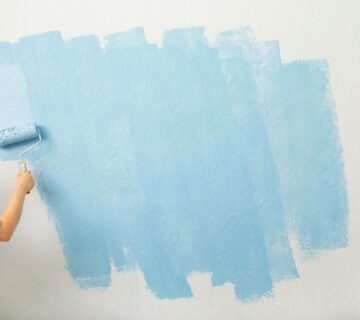Drywall is a common material in homes, but it’s not the most durable. Whether it’s a stray bump, a nail hole, or the general wear and tear of daily life, small drywall repairs are something almost every homeowner faces at some point. The good news is that fixing minor drywall issues is easier than you might think! Once you identify the damage, gathering the right tools and materials is the next step. After that, it’s all about prepping the surface, applying the repair compound, sanding it down, and adding the finishing touches to get the wall looking as good as new.
Repairing Small Nail or Screw Holes
Repairing small holes from nails or screws is a breeze. All you need is lightweight spackle, which you can apply directly with your finger to fill the hole. For textured walls, like orange peel, this method works great without needing any fancy tools. For smooth walls, though, you might want to sand it down afterward to make sure the surface is even. And remember, with small holes, a little goes a long way — it’s easy to overdo it, which just means more work in the end!
Materials Needed for Larger Hole Repair
Larger holes require a bit more effort, but it’s still something you can handle on your own. You’ll need a putty knife, yellow fiberglass drywall mesh tape, drywall mud (also known as joint compound), a utility blade, a sponge, rattle can texture (if your walls are textured), primer, touch-up paint, and a paintbrush or roller. These materials will help you achieve a smooth, seamless repair that blends perfectly with the rest of your wall. Taking your time with each step is essential to getting a professional-looking result.
Step-by-Step Guide to Repairing Larger Holes
- Trim the Perimeter: Start by cutting away the damaged drywall paper around the hole. This will expose the bare drywall underneath.
- Apply Mesh Tape: Next, cover the hole with strips of drywall mesh tape, ensuring it sticks to the drywall and not to any textured areas of the wall.
- Spread the Drywall Mud: Apply a layer of drywall mud over the mesh tape, feathering it out so that it blends smoothly with the surrounding wall. This helps fill the hole and creates an even surface.
- Smooth with a Sponge: Once the mud is partially dry, use a wet sponge to smooth out the patch. Work in circular motions to ensure the surface is even and keep the sponge moist while doing so.
- Let It Dry: Allow the patch to dry completely before moving on to the next step.
- Prime the Area: Apply a coat of primer to the patched area and let it dry. This will help seal the compound and prepare the surface for painting.
- Texture the Wall (If needed): If your walls have a texture, you can use a rattle can texture spray to match the pattern. Shake the can thoroughly for about two minutes, then practice spraying on a piece of scrap cardboard. Once you’re comfortable, apply the texture to the wall, starting light and adding more if necessary.
- Finish with Paint: After the texture has dried, apply another coat of primer followed by touch-up paint to blend the patch seamlessly into the rest of the wall.
Alternative Sanding Methods
If you’re not a fan of wet sanding, you can always dry sand the patched area using drywall screens. This method creates a bit more dust, so be sure to wear a dust mask and have good ventilation in the room. Wet sanding is cleaner, but dry sanding still does the job — just be prepared for a bit of extra cleanup afterward.
Final Thoughts
Repairing drywall doesn’t have to be a stressful task. With the right tools and a little patience, you can have your walls looking as good as new in no time! Take your time with each step, and remember: less is more when it comes to applying the compound. For more DIY tips and home improvement advice, visit Sisu Painting and check out the Sisu Painting’s blog.. Happy repairing!








I’m lovin’ it! I actually just read like three of your posts today. So that means you better keep writing more like this one about drywall repair, because I am going through these like they’re going out of style. drywallrepairlancaster.com
Soooo cool! I woke up and later in the day I started thinking about this stuff about drywall repairs. I found your site on Google and it totally answered my questions. Thanks so much! https://www.readingdrywall.com/